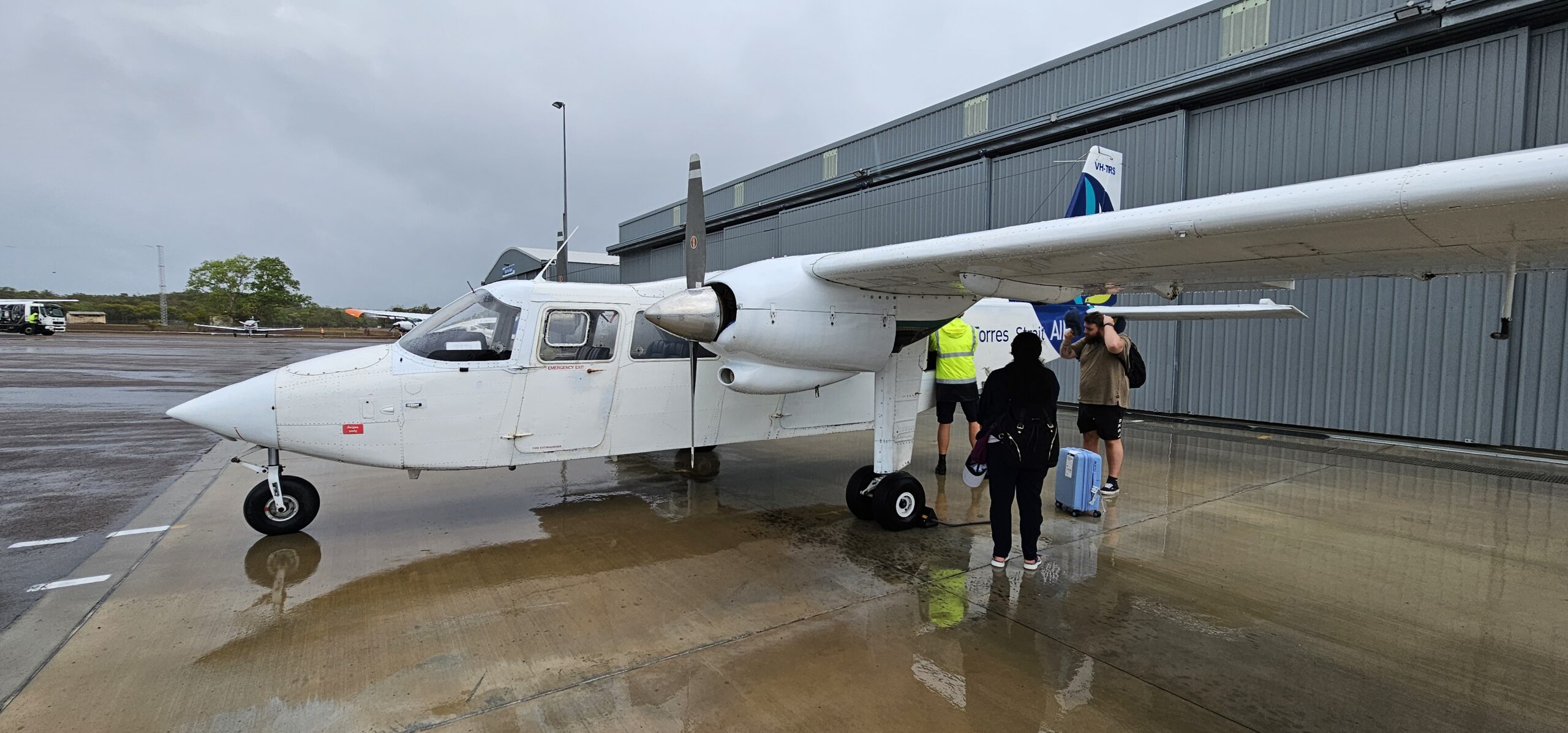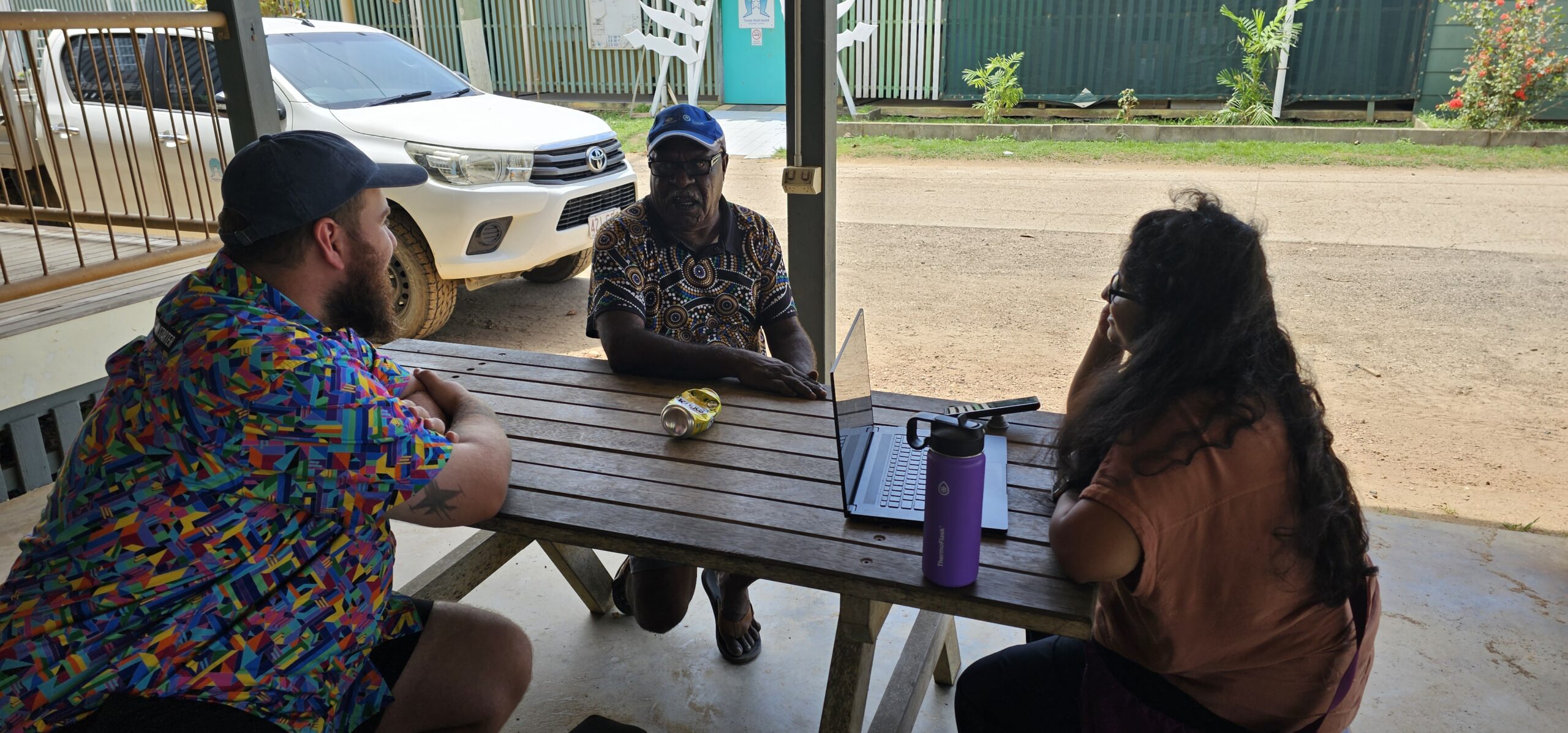In 2024, the First Nations context for the EWB Challenge will be delivered in partnership with Torres Strait Island Regional Council. Torres Strait Island Regional Council is Australia’s most northerly municipality, representing 15 unique island communities, spread across 42,000km2 of sea, and an international border with Papua New Guinea. TSIRC plays a pivotal role in fostering community growth and development in those areas including Saibai Island. In December 2023, the EWB Challenge team travelled to Saibai Island on a scoping trip for the 17th EWB Challenge. EWB Challenge Series Lead, Sai Rupa Dev, reflects on her time spent with First Nations leaders in the Torres Strait.
In a world grappling with the devastating impacts of climate change, small island communities are among the most vulnerable. Their geographic location and limited resources make them particularly susceptible to rising sea levels, severe weather events, and coastal erosion. One such community facing these challenges is Saibai Island, located in the Torres Strait between Australia and Papua New Guinea.
Uncle Pabai and Uncle Paul, esteemed First Nations leaders from the Torres Strait Island of Boigu and Saibai are at the forefront of a groundbreaking legal battle known as the “Australian Climate Case”. With ancestral ties spanning thousands of years, these Traditional Owners are confronting the Australian Government for its failure to curb climate change, a crisis that now jeopardises their homes due to rising sea levels. The case asserts that Australia’s response to climate change ranks among the world’s weakest, particularly endangering the Torres Strait Islands. If the government doesn’t swiftly change its course, these islands could become uninhabitable, rendering Torres Strait Islanders the nation’s first climate change refugees.

EWB Challenge team travelling to Saibai Island for a scoping trip.
In December 2023, my colleague Josh and I travelled to Saibai Island on a scoping trip for the 2024 EWB Challenge, where we met Uncle Paul, a revered member of the Saibai Island community. Our conversation revealed the stark reality of climate change impacting these low-lying islands, where the relentless movement of sand and erosion, exacerbated by monsoon seasons, threatens the very fabric of the community.
“Our land is disappearing in front of us in Saibai and Boigu,” said Uncle Paul. While also explaining the devastating consequences of erosion, emphasising how it damages critical infrastructure such as the seawall. For Saibai, the seawall isn’t just a structure, it is the first line of defence against rising waters. Completed in 2017, it took four years for the water to rise above the seawall, highlighting the urgency of protective measures.
However, the challenge extends beyond it. “Kasaba (cassava) is shrinking in size, same with the bananas,” explained Uncle Paul. Increased salinity and waterlogged conditions are slowly contaminating the community gardens, a source of sustenance. The impacts reverberate through every aspect of life, from gardens to cultural practices. This is also reflected in the funeral practices on the island, where the local cemetery is impacted due to its proximity to sea water.

EWB staff, Sai Rupa Dev, and Joshua MacLeod in conversation with Uncle Paul.
While reflecting on the broader environmental impact, Uncle Paul noted the challenges in waste management. Rainwater carries landfill waste to the swamp, contaminating the land. The need for better engineering solutions became apparent—a plea not just to prevent Saibai from sinking but to thrive sustainably.
As climate change intensifies the threats of rising sea levels, severe weather events, and coastal erosion, engineers are essential in developing climate-smart infrastructure and innovative solutions. We need to apply our expertise to create resilient and sustainable designs that can withstand the impacts of climate change while minimising environmental degradation. “We need engineers to look at Saibai with a climate lens and fix it, we don’t want Saibai to sink,” said Uncle Paul. Ultimately, engineers need to be climate-smart in approach, recognising the interconnectedness of environmental, cultural, and socio-economic factors in small island communities. Our innovative and adaptive solutions can contribute significantly to preserving the identity, livelihoods, and resilience of these communities in the face of climate change.

Locals travelling between Saibai Island and Papua New Guinea.
The conversation with Uncle Paul underscored the urgency of community-led and feasible solutions. The Saibai community seeks not only environmental resilience but also the restoration of cultural practices intertwined with the land. As Uncle Paul emphasised, the challenges are real, but so is the determination to safeguard Saibai’s future, ensuring it remains resilient against the changing tides of climate. The call for attention, support, and sustainable engineering solutions resonates beyond Saibai—a reminder that climate challenges require a collective effort and global solidarity.
You can learn more about the Australian Climate Case here and sign the pledge supporting Uncle Paul and Uncle Pabai here.
Featured image: Saibai Island and the neighbouring Dauan Island during high tide, December 2023


